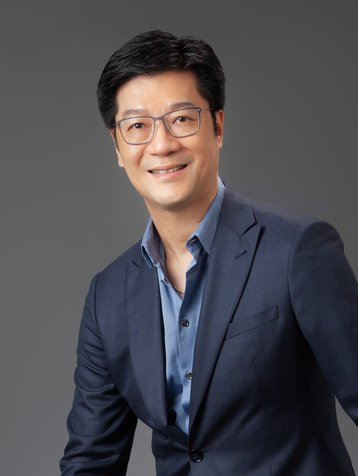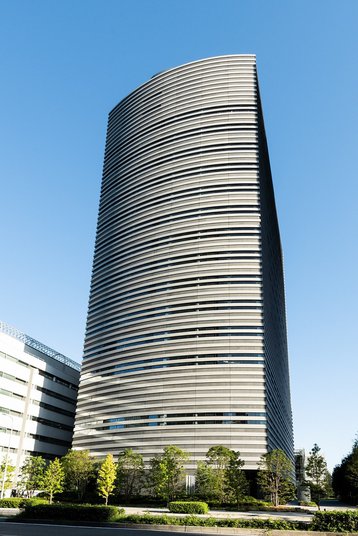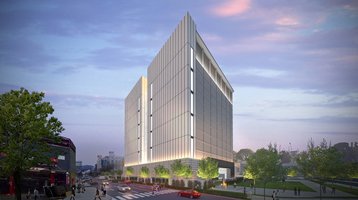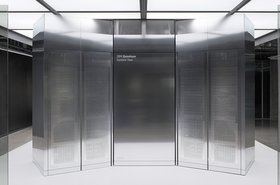While demand in traditional data center hotspots remains as high as ever, many developers are looking for opportunities on new fertile ground. Some are turning to Latin America, others Africa, while some are eyeing Europe’s secondary markets.
But many are targeting Asia, with a focus on India and Southeast Asia, lured by the massive population, growing demand for data centers from both local and international cloud & Internet companies, and relative lack of competition.
US companies such as Stack and Vantage have made moves to expand into APAC, while the likes of Digital Realty, Equinix, NTT, and STT GDC have all begun to expand existing footprints in the region.
But there’s also a new breed of local companies looking to develop region-wide footprints. The likes of Princeton Digital Group, BDx, and AirTrunk are offering APAC-based platforms spanning multiple countries in the region. Among them is Digital Edge, a Stonepeak-backed company with operations across the region already and plans to expand rapidly over the next few years.
A new Asian Tiger?
New York-based investment firm Stonepeak Partners LP (aka Stonepeak Infrastructure Partners) formed Digital Edge in August 2020.
Digital Edge began by taking a stake in ITOCHU Techno-Solutions Corporation’s Mejirozaka data center in Tokyo and announcing plans for a 12MW facility in central Osaka.
Since then, the company has rapidly expanded through a combination of building and buying across APAC.
In Japan, the company acquired two data centers in Nihonbashi and Shinjuku (known as ComSpace I and ComSpace II) from Japanese telco Arteria Networks Corporation, and then acquired five more data centers from ICT Services company Itochu TechnoSolutions (CTC).
The new facility in Osaka has launched this year and the company recently announced plans for another new build in Tokyo in partnership with local real estate developer Hulic.
In South Korea, the company acquired Sejong Telecom’s data center assets in Seoul and Busa, and is also planning a new 120MW campus in Incheon in partnership with SK ecoplant.
In Indonesia, the company acquired a majority stake in Indonet for $165 million. Indonet’s Edge DC then launched a 6MW data center in Jakarta and Digital Edge has plans for a 23MW facility in the city.
In the Philippines, the company launched a joint venture with local real estate firm Threadborne Group to build a 10MW data center in Manila. That has since been announced as ready for service with a second facility in the works.
The firm is led by Samuel Lee, who previously served as president of Equinix’s Asia Pacific business.
“APAC’s digital infrastructure development in the last 20 years has been driven by global companies getting into Asia,” he says. “Now there are lots of Asia Pacific-based digital infrastructure companies, cloud companies, Internet companies, emerging from China, from Japan, from Korea.
“When I look at the next ten years I have no doubt that the next wave of growth in Asia is going to be driven by those Asia-based companies. And most of the growth will be within the region and in the local countries.”
“Part of our business model is to bridge the digital divide in Asia,” he adds. “We are not only just trying to build digital infrastructure in tier-one markets such as Japan and Korea. But we are also looking at bringing the state-of-the-art technology and getting into some young and high-growth markets such as the Philippines and Indonesia.”
Lee founded Telekom Consulting Limited in the 1990s before serving as managing director of Pacific Gateway Exchange and then joining Equinix in 2000.
“Leaving a company where I spent almost 20 years wasn’t an easy decision,” he says. “But Asia Pacific is a growth engine of the world, and we have our own company that can better take this opportunity and help Asia-based companies, instead of working for a global company where Asia is only 20 percent of the business.
“Not a lot of people have this opportunity in their career. We are seeing tremendous growth and lots of opportunities happening on daily basis. So it's been a very exciting three years and we are very excited looking to the next few years.”
Going region-wide by thinking local
Stonepeak also owns US operator Cologix and is a significant investor in CoreSite. When asked why the company bothered to launch a new company rather than simply expand one of its existing US companies, Lee says that localization is a key part of the strategy.
“We talk about globalization, but the US has a different culture, different regulation, different rules in doing business to Europe and Asia Pacific as well.”
He adds that while we talk about Asia Pacific as a region, he says it is really only a “convenient word” to encompass a varied and complicated landscape.
“There's nothing really to tie all those countries together. There's different currencies, different languages, different business practices, different laws, and sometimes those countries are actually competitive with each other,” he says.
To deal with such a vast market, Digital Edge’s strategy has generally been to acquire a local partner and facilities – such as Indonet or select assets from Sejong Telecom or Arteria Networks – and use that as a base from which to build with a view to developing larger facilities in future.
“A data center is a whole ecosystem; with a brand new empty new data center, its not easy to attract customers,” says Lee. “You need something to start with to solve the chicken and egg problem. And for us, there's nothing more important than getting a level of density and cloud on-ramp density. The likes of Seijon and ComSpace I & II become a solid foundation when we enter a new market.”
“That's how you show the customer that your brand new shiny new data center is not an island, they actually get connectivity options. And once you get the network density, then you can think big and pick your targets.”
The goal, he says, is to offer a consistent platform across different markets in the region: “When we look through from the customers' eyes, they just want to have a reliable partner that has a data center infrastructure across Asia so that they can deploy in the market they want to deploy and have peace of mind.”
“The local teams have the best knowledge and relationships in market, and that's how we develop, through local expertise. Without the local team there and without the knowledge, it is hard to execute. But as a platform as a company, we are going to make consistency in our product and strategy, so to make it consistent in the customer’s eyes.”
The company is largely deploying a modular design that offers standardization across all the company's new facilities, albeit with some localization where required. That helps the company offer a consistent PUE figure across its facilities – a water-cooled design with an annualized target of 1.2 and a WUE of 1.4.
Targeting cloud players and network density
The company aims to lure international companies looking to operate locally, but also help local companies that might be customers, including ISPs, software, and cloud companies.
Lee says Japan is the company’s most stable and mature market. And while there may be more risk in nascent markets, with it comes greater opportunity. There may be less chance to acquire local partners in some markets, though,
“Our focus is to try to do M&A for assets with connectivity and cloud density,” he explains. “A lot of assets in young markets are in the hands of the old telcos, and we need to make sure whether those assets are attractive enough; do they have enough network density and will it be a magnet for more customers?
“If it's just an old data center with some enterprise customers, that may not be ideal in our strategy so we may just partner with someone and build a new one.”
The company has followed this approach of eschewing acquiring a local partner and instead going straight in with a new build in tandem with a developer in markets such as the Philippines and India.
"We didn't go out and buy anything in the Philippines because we believe the market is on the edge to take over. We believe the new subsea cables will attract the cloud guys and digital infrastructure guys and we don't want to miss the window.
"We’ve found a very good local partner who knows how to develop, and we feel comfortable that like we can bring the customers to us.”
That lure of cloud companies is important.
“Before we can effectively go to the enterprise market, we need to have the cloud guys there. We need to have the system integrator there. We need to have the connectivity option there.
“The digital infrastructure companies want to push their deployments to the local countries and as close to the customer as possible. That is basically our core target market for the next couple of years, because they will enable the latter part of our strategy to attract enterprise customers.”
The company hasn’t shared its current occupancy levels or pre-lease rates of its new facilities, but Lee says the company is “excited and optimistic” about take-up on its new builds.
Further expansion and entry into India
In late 2022, Lee said Digital Edge aims to more than double its data center capacity over the next five years to more than 500MW, with plans to enter India, Vietnam, and Thailand.
“Today we have 15 data centers in five markets and roughly 120MW in our portfolio,” says Lee. “But we are definitely not going to stop there; we continue to expand into new markets building new sites.”
Bangkok is cited as a potential target – Thailand is another market branded “very exciting” by Lee – while you “cannot ignore” India.
Vietnam he describes as “interesting” and one the company is keeping a close eye on. “Bangkok and Vietnam, we really need to spend more time to learn the local markets and find the right partners.”
Since DCD originally spoke to Lee, Digital Edge announced its expansion into India with a 300MW data center campus in Navi Mumbai with the Indian sovereign wealth fund National Investment and Infrastructure Fund (NIIF) and real estate investment firm AGP.
We followed up to ask why the company jumped straight into India without first buying a local partner as it had done in many other markets, with Lee saying there were “fewer viable options” in India’s nascent data center market.
“Given the strength and local knowledge of our partners NIIF and AGP, we are confident that pursuing a greenfield development is the best way for us to enter this fast-growing market,” he says.
Lee says the partnership offer NIIF’s local and operational expertise along with AGP’s on-the-ground real estate development and construction experience will help Digital Edge increase its speed to market in India’s growing and increasingly competitive market.
Mumbai was picked given its status as one of the country’s major data center hubs and its availability of power and fiber, but the aim is to create a ‘pan-India portfolio’ of facilities. Lee notes there are other local markets – New Delhi, Chennai, and Hyderabad – and will listen to customers to “ensure we are in the metros where they need us to be.”
International expansion from China a key to fuel growth In China, Digital Edge has entered into a partnership with local operator Chuanjun Information Technology (Shanghai) Co., Ltd, and established PEK1 in Beijing.
Operated by Chuanjun with support from Digital Edge, PEK1 one offers 8,360 sqm (90,000 sq ft) and 7.8MW of capacity, with space for 1,800 racks.
Like Digital Edge, Lee says Chuanjun intends to launch data center operations and services in major metros throughout China via M&A and new build activity.
“We have a comprehensive sales and marketing partnership to promote and support Chinese customers to expand their digital presence overseas,” he says. Lee described the Chinese partnership as a “critical” part of the company’s platform not only because of the local demand in China but also because it means the company is able to keep Chinese customers on the platform outside China. “Lots of those big Chinese Internet companies are expanding everywhere.
Our sales team in China generate a lot of opportunity in the sales pipeline for Indonesia, for Japan, for Korea, as well.” When asked about expansion into regions further west, Lee suggests the plan to remain focused on Asia but utilize the benefits of Stonepeak’s network.
“We see a lot of our customers based in Asia Pacific have a big appetite to go and establish their presence in North America, and that will be an opportunity for us, not only to take care of their needs in Asia,” he says. “That’s why we picked Stonepeak as a partner, because they have a platform outside Asia and we can work with their portfolio companies in other parts of the world.”








